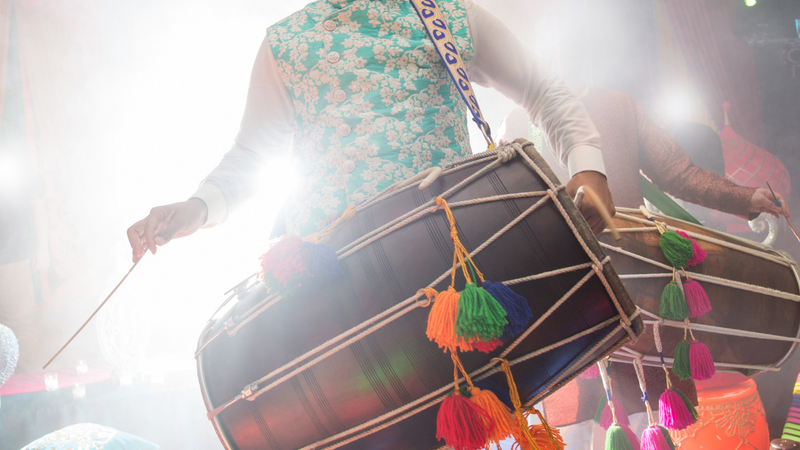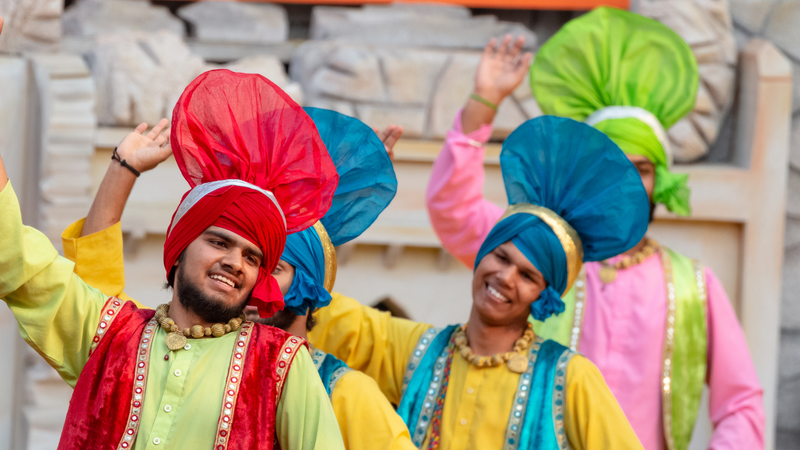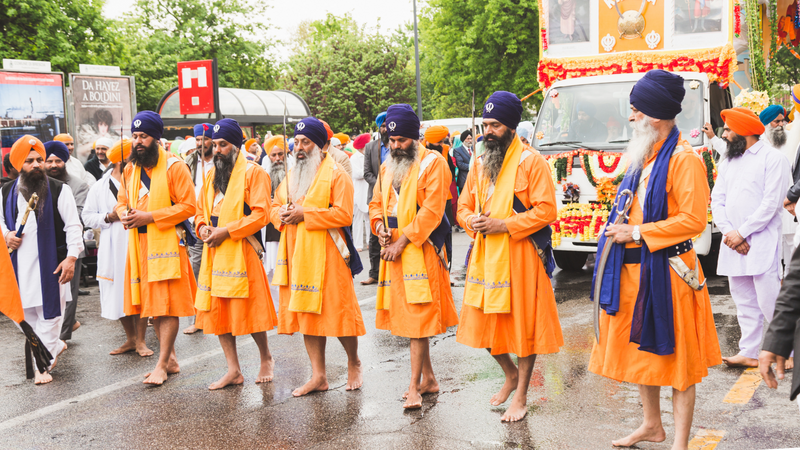Baisakhi is a festival that heralds the arrival of spring and celebrates the bountiful harvests that the new season brings. This harvest season brings a sense of newness and rejuvenation; numerous festivals celebrate this spirit across India. In southern India, people commemorate the new year with Ugadi, in north India, the celebration of Baisakhi marks the beginning of a new harvest cycle.
The festival is a time for rejoicing and new beginnings, and it is steeped in traditions and customs that have been passed down through generations. This harvest festival is widely celebrated across India. It is an occasion not to be missed, especially if you travel to the country's northern parts during this time.
In this article, we present all the essential information you need to know about Baisakhi, so you can fully immerse yourself in the festive spirit of this joyous occasion.
What is Baisakhi or Vaisakhi festival?

Baisakhi, also known as the Vaisakhi festival, is a harvest festival that marks the beginning of a new crop cycle. It is celebrated across India, particularly in the northern region and Punjab. Baisakhi is a time for revelry, dance, and feasting on traditional delicacies. Baisakhi carries significant cultural value and is deeply rooted in history and tradition, making it an integral part of India's diverse and vibrant heritage.
When is Vaisakhi or Baisakhi 2023?
This year, April 14 marks the joyous occasion of Baisakhi, the harvest festival of Punjab, to be celebrated with much zeal.
Significance of Baisakhi: Why do we celebrate Vaisakhi or Baisakhi?
Baisakhi commemorates the harvest season of the Rabi crops. For acres and acres, one can only see golden wheat fields. Originally a harvest festival, it also holds immense religious significance for the Sikh community, as it marks the formation of the Khalsa Panth - a holy brotherhood that upholds the values of justice, equality, and selfless service. The 10th Sikh guru, Guru Gobind Singh, established the Khalsa order on this auspicious day. Many seek baptism, while some families observe unique traditions.

The festival is a time for reflection, gratitude, and spiritual renewal, as people gather to offer prayers, share sweets, and participate in colourful processions. Baisakhi reminds us of the power of community as people from different backgrounds come together to celebrate their shared heritage and renew their commitment to each other and the world.
How is Baisakhi celebrated?

Sikhs celebrate the Baisakhi festival with great zeal and enthusiasm, and their celebrations are full of unique rituals and customs. The festival starts with devotees visiting Gurdwaras and bathing in holy rivers, believed to cleanse them of their sins. People wear new clothes and dance to the beat of dhol and nagada, rejoicing in the festive spirit.
Special celebrations occur at significant Gurudwaras like Talwandi Sabo, Anandpur Sahib, and the Golden Temple in Amritsar, where devotees offer prayers and seek blessings from the divine. Baisakhi is also known for marking the bountiful harvest, and farmers express their gratitude through special prayers and rituals. They greet each other with the phrase 'Jatta Aayi Baisakhi' which means ‘the harvest has arrived.’
After the prayers, karah prasad, a sweet offering made of flour, sugar, and ghee, is distributed among the devotees, followed by a community lunch or langar. The Nagar Kirtan procession is then carried out through the streets, where devotees sing devotional songs and hymns in honour of the festival.
People wear their best clothes and adorn themselves with vibrant displays of colourful garb, which adds to the festive spirit. Baisakhi is a time of celebration, reflection, and renewal, reminding people of the power of community, the spirit of gratitude, and the importance of cultural heritage.
The customs and traditions of Baisakhi
The customs and traditions associated with Baisakhi are unique and diverse, with each region having its unique way of celebrating this occasion. However, it becomes double the celebration for majorly Sikhism practising farmers of Punjab. Here, we will be exploring the traditional Sikh customs and practices that are observed during the Baisakhi festival. From attire and dance to cuisine, we'll provide a comprehensive overview of how the occasion is celebrated.
Traditional Baisakhi attire
On the auspicious day of Baisakhi, men, women, and children deck themselves in the finest traditional Punjabi attire to celebrate the joyous occasion. The vibrant and dynamic atmosphere is reflected in the choice of clothing, with colourful turbans worn by men adorned with a fan-like embellishment, paired with a kurta, waistcoat, rumaal or scarf, and lungi. Meanwhile, women wear the customary salwar kameez with the most extravagant and festive jewellery. The multi-hued brilliance of the attire reflects the exuberant and vibrant nature of the Punjabi way of life, adding to the festive spirit of the occasion.
Baisakhi processions

The Baisakhi procession, also known as Nagar Kirtan, is an integral part of the festivities in Punjab. This lively event involves a grand parade led by the Panj Piaras, five senior religious Sikhs who carry the holy scripture Granth Sahib with utmost reverence. The procession makes its way through the streets, accompanied by devotional music, hymns, and chanting, attracting many devotees. Youth showcase their martial art skills, while drummers and bands create a vibrant atmosphere. Men twirl swords, adding to the colourful spectacle. The Baisakhi procession is a joyous celebration of Sikh culture and tradition, marking the start of a new chapter in people's lives.
Baisakhi special food

Baisakhi special food is a significant part of the celebrations, and it is a time when people indulge in delicious delicacies unique to this festival. The day begins with prayers and ends with a community feast, where everyone partakes in a delightful meal.
One of the most popular events during Baisakhi is langar, a community kitchen serving free food. The langar serves simple vegetarian meals, including dal, roti, sabzi, and kheer, and it is a tradition that dates back to the time of Guru Nanak. The idea behind langar is to promote equality, where people of all castes, religions, and backgrounds sit together and eat.
Baisakhi is incomplete without indulging in traditional Punjabi cuisine. One such must-try delicacy is the sarson ka saag, a delectable preparation of mustard leaves, spinach, and other green vegetables. Accompanying the saag is makki ki roti, a bread made with corn flour that perfectly complements the flavours of the saag. The dish is usually served with a dollop of butter, a favourite among locals and visitors alike.

No Baisakhi feast is complete without the traditional sweet dish, karah prasad, made with whole wheat flour, ghee, sugar, and water. It is usually served in Gurdwaras after the prayers, and people believe it has divine healing properties.
For a unique culinary experience, celebrate Baisakhi with rice porridge, a dish that is both flavourful and nutritious.
Baisakhi festival is a significant occasion for Sikhs and Punjabis worldwide, celebrated with great fervour and enthusiasm. The festival's customs and traditions have been passed down through generations, highlighting the importance of cultural heritage. From all the vibrant attire to the lively music and dance, Baisakhi is a time of rejoicing and renewal. It is a reminder of the joy of living, cherishing relationships, and giving thanks for life's blessings. As we look forward to the next Baisakhi festival, let us embrace the spirit of the occasion and spread happiness and positivity in our communities.


_1681032065463_thumb_1200.png?w=3840&q=75)

